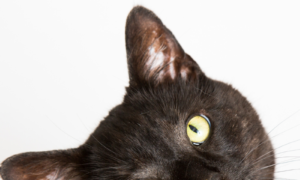When a new baby comes home, everything changes for the family. Cats aren’t big fans of change, and if introductions aren’t handled correctly the relationship  between the resident cat and child can get off to a rocky start. The April 2014 issue of Catnip offers these tips to build a healthy relationship between cat and child:
between the resident cat and child can get off to a rocky start. The April 2014 issue of Catnip offers these tips to build a healthy relationship between cat and child:
- Cats don’t suck the breath out of babies as the fable goes, but it can be dangerous if a cat jumps into the crib and falls asleep on top of a newborn baby. Babies don’t have strong enough ribcages to keep breathing with the weight of a cat on them, even a cat weighing as little as 7 pounds. When the baby is unsupervised, put a cat net over the crib to prevent cats from crawling inside.
- Once children reach toddler age, monitor cat and child interactions closely. Toddlers may consider the cat a toy and attempt to pick him up by the tail to play. Children sometimes chase a cat and back the cat into a corner, not knowing the cat will go into defensive mode. Let your child know the right and wrong things to do around the cat.
- To encourage a healthy cat and baby relationship, have your child feed the cat a special treat that comes only from your child. This will show the cat that interacting with the child will net positive results.
- If your cat tends to claw or scratch, be sure his nails are trimmed regularly. Also consider putting nail tips on his nails to minimize effects of scratching. Softclaws (softclaws.com) is a good option.
A cat and child can build a wonderful relationship if it begins correctly. Growing up with pets helps children develop a respect for other living things, boosts self-esteem, makes them more responsible and can even boost IQ.
I’d say that’s a win for everyone!





